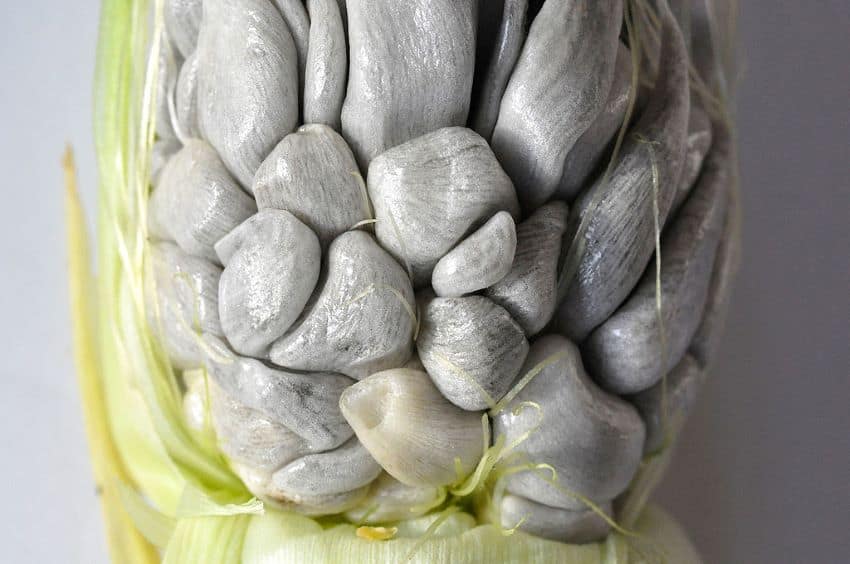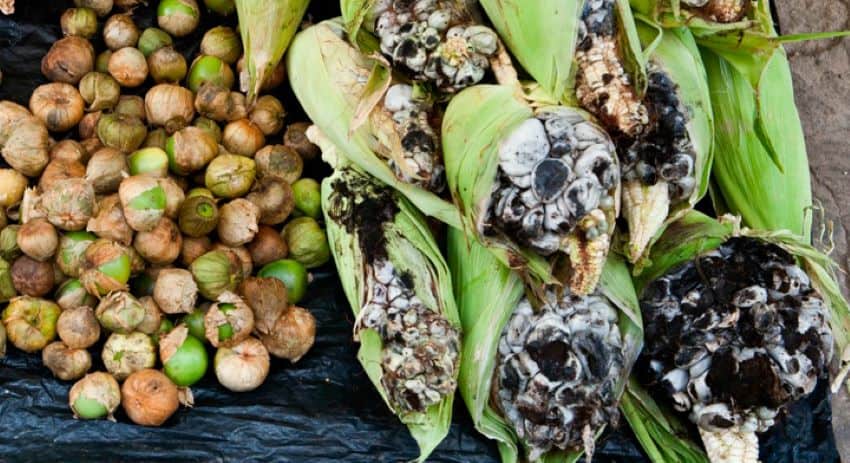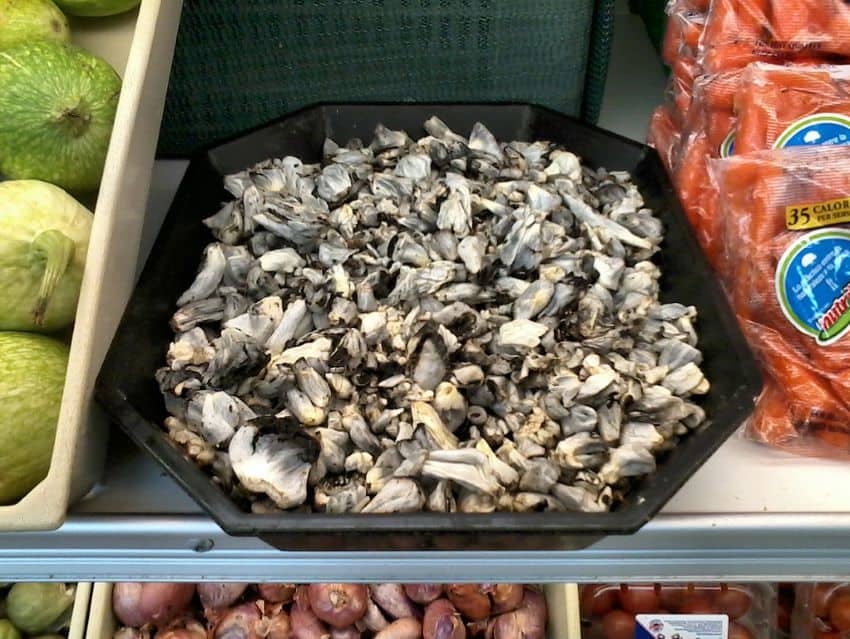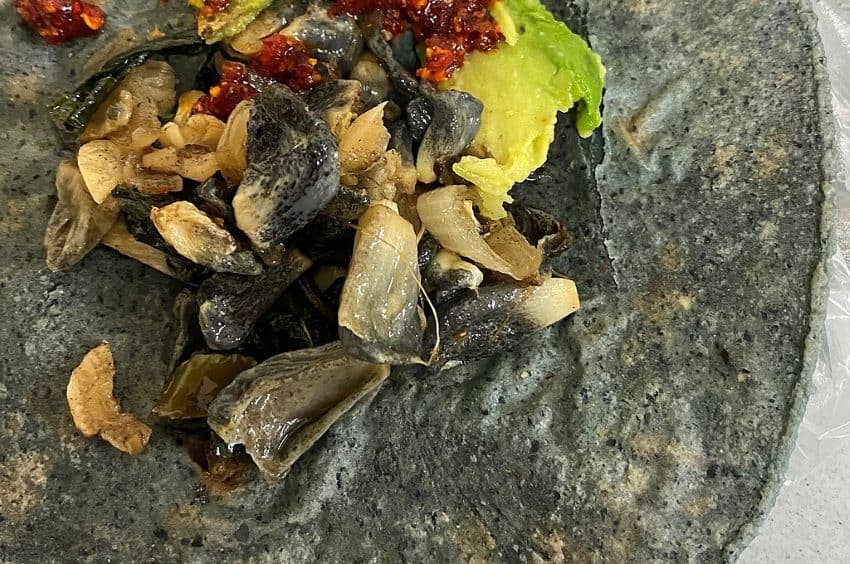[ad_1]
I seriously consider renamed this series “Don’t determine my raw material with its dubious odd appearance.”
Today, I would like to introduce you to Hutlakoch, which is often referred to as Mexican food items. It has a unique flavor and I believe that I cannot exactly describe. Although Hoodlakoch is up to maize, its popularity is the most recent growth.

Cuitla- what-what?
Kutlakoch, also known as Hoodlakoch, is a parasitic fungus that grows exclusively in maize plants, affecting their corn kernels, stems and leaves. Known as Corn Smart in English, it usually appears in the summer and varies from gray to blue and deep black. The taste of Hoodlakochch is as intriguing as its appearance; It contains soil notes with chocolate, vanilla and slightly bitter taste, as well as sophisticated smoking and unity with white corn. To see? The words that describe its unique flavor are sufficient.
The word nahuatl translates into the roughly “grows out of something”; In this case, corn. Although we do not examine the psychology of the Mexica people, the name provides the insights on how cuitlacoche is not considered a valuable ingredient in the pre -Columbian cultures.
Does it really prefer food commodities?
The comparison is not completely far away. In traditional settings. The growth of the hoodlakochchi is directly affected by rain and humidity levels. Although it seems to be easy to manage moisture in a field, the fungus is actually spread by other natural factors that affect birds and maize. Therefore, traditionally it is difficult to control the production of Hoodlakoch. However, in recent decades, however, Hoodlakoch manufacturing techniques made by Mexican scientists It has made it possible to grow fungi throughout the year with a reliable yield.
As for the cost, although not at the level of food commodities, the Hoodlakoche is often more expensive than regular corn, due to its rare nature and harvesting challenges.
A modern dish
Historical research reveals that the pre-Colombian cultures are considered a troublesome than a taste of Hoodlakoch. In fact, they believed that eating it would lead to poison.

Until the 1950s, foods such as Hoodlakoch Creeps and poultry began to feature in their menus in the Hoodlakoch sauce. These dishes became popular for their attractive and intriguing qualities.
Today, Hoodlakoch is very accessible and widely consumed, although its popularity is often concentrated in the central regions of Mexico. Even now, in some rural communities, the origin of Hoodlakochch is considered a divine curse. Others, it is ignored, and in some cases, it is more consumed from the need than a culinary treat.
If this is the flower of God, why do you eat it?
The way we cook the hoodlakoc with onions, aromatic herbs and garlic – makes its flavor completely delicious and inevitable.

In addition to its excellent taste, recent studies show that Hoodlakoch has a large amount of vitamins, minerals, antioxidants and proteins. The funniest fact for our vegetarian friends: Hoodlakochch has 17% more protein than other mushrooms and has less fat than most of them.
Ways to enjoy Mexican food commodities
In Durango, Jalsco and Chiabas, a drink of Hutlakoche, a type of adol. In Central Mexico, where more testing with this fungus, it is consumed in soups, mole, tamal, and of course, tacos and kascadillas.
Interestingly, combining hoodlakochi with nichstamalis corn in tacos and cassatillas increases its nutritional benefits. So, if you find Hoodlakoch or Kutlakoch in a restaurant menu, do not hesitate to try it. The taste is unique and unlike anything you’ve experienced before.

If you walk on the street and find a taco or kassadilla stand that provides kutlacocchi, make sure to order a taco. My personal preferred Cassadilla, which has a long tartilla, oaksaka cheese and cooked kutlacocchi at home. That first bite is simply famous!
Creating your own cuitlacoche foods
Want to prepare cuitlacoche at home? As always, we have covered you! When buying Hoodlakoche, it is better to buy it on the corn copper. However, if you want to avoid trouble, search the pre -packaged plates. If the hoodlakoch is black, dried or black juice around it on the plate, it is not very new. The new Hoodlakoche should be gray and fluffy and almost squeezed.
To cook the fungus, the simplest and most common method is to saut the garlic and onion with a little oil in a pan. Then, add the hoodlakochch and cook until its juices and aromas are released. Finally, add some leaves and some leaves of the ebosot with salt to taste. Treat the hoodlakocchu like any other mushroom, you will be fine. Once your Hoodlakoch cooked, heater a tortilla and make yourself a taco!
In the southeastern state of Chiabas, I learned that you can enjoy the hoodlakoch without cooking a puree. Simply mashed the hoodlogic and add a little salt. Once you get your puree, use this to create kascadillas. For a regular tortilla, add the cheese and your hoodlakoch puree and cook until the cheese melts. The taste is very serious and fresh in this way.
Trying Mexican food commodities? How would you describe its flavor?
Maria melandez A Mexico City Food blogger and influencer.
[ad_2]
Source link













